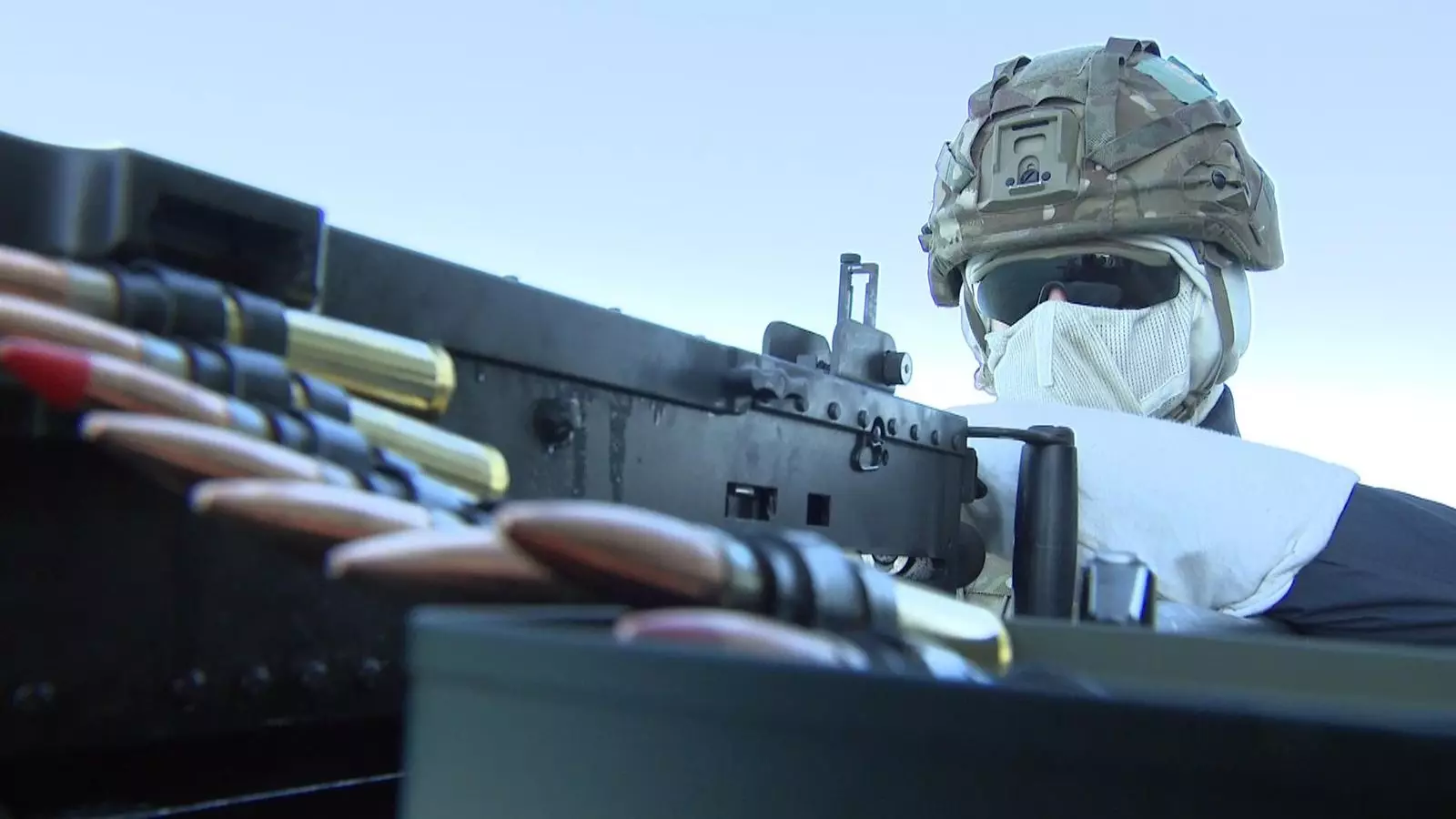Recent military exercises involving HMS Dauntless, a Type 45 destroyer, illustrate a troubling but familiar spectacle: an elaborate show of might intended to convey strength in the face of mounting global tensions. Yet beneath the pulsating surface of missile launches and combat drills lies a stark truth—this ostensible readiness is fraught with limitations and questionable intent. The Royal Navy’s training off the Welsh coast, armed against mock enemy drones and uncrewed vessels, has all the hallmarks of a desperate search for credibility in an age of geopolitical instability.
As the Royal Navy conducts these exercises in preparation for a broader deployment to Asia, one cannot help but think: what exactly is being rehearsed? The rehearsals involve a blend of simulated threats and real maneuvers against unmanned adversaries that might be more theatrical than pragmatic. Captured by reporters and touted through airtime as powerful demonstrations of naval prowess, these exercises mostly serve to mask an unsettling reality—budget constraints and diminishing naval capabilities.
The Threat of Obsolescence
Naval warfare tactics must adapt to an ever-evolving landscape, particularly as drone technology reshapes engagements at sea. The fact that the Royal Navy must contend with drone threats is not merely a precaution; it’s a necessity reflecting a fundamental shift in maritime combat. Yet even as the government pledges to ramp up defense spending to 2.5% of GDP by 2027, many strategists and analysts argue that this increase comes too little and too late. Given the decades of cuts that have led to a significantly reduced fleet and an overstretched service, there’s the uncomfortable notion that mere financial increments cannot suddenly remedy an underfunded institution.
Let’s be honest: the Royal Navy is also grappling not just with material limitations but with psychological ones. How can a service regain credibility when its very existence hangs in the balance? The invocation of “formidable capabilities” by the armed forces minister may bolster morale temporarily, but it’s hard to shake the nagging worries over whether such capabilities can effectively translate into action if needed. The imposition of a rigid defense budget does little to alleviate real concerns about what many see as a drifting navy, reactive at best.
Conflicting Alliances and Evolving Threats
Moreover, the UK’s military strategy has become inextricably linked with an unpredictable ally—the United States. With escalating tensions between Washington and Tehran, the issue of whether the UK would divert its naval assets to support a potential US strike on Iran remains an open question. The words of armed forces minister Luke Pollard may ring hollow in the eyes of many who understand the complexities of international politics. As the phrase goes, “the advantage of naval power is that it always presents options,” but at what cost, and is this truly an advantage when entangled in another nation’s strategic ambitions?
The focus on preparing for an attack or a military exercise can sketch a false picture of agency. The UK may have options, but those options often exist within a framework controlled by the United States. This blurred line between ally and subordinate raises critical concerns about the sovereignty and independence of UK military strategy.
The Broken Circle of Defense Spending
The complexity of navigating military readiness against a backdrop of limited funding cannot be overstated. While the government attempts to bolster its defense budget, a pervasive sentiment suggests that this is akin to placing a Band-Aid on a bullet wound. Experts vocalize their concerns about the gradual decline in overall naval capacity and readiness. What does it say about our prioritization when defensive drills are lauded as achievements while fundamental strategic flaws go unchecked?
The imminent threats posed by maneuverable drone vessels, as evidenced by their effectiveness in Ukraine against Russia, cannot merely be met with bravado or reassurance found in polished public statements. The focus needs to shift from mere displays of power to substantive policy reforms that address vulnerabilities.
As such, we find ourselves in a paradox: the Royal Navy attempts to project strength amidst an undeniably weakening framework. While the training exercises may appear as formidable shows of might, they also reveal stark vulnerabilities that cannot simply be masked by bravado or strategic rhetoric. The very fabric of security and preparedness we long to uphold stands at a precipice, one teetering precariously between the dire necessity of defense and the reality of dwindling capabilities.


Leave a Reply